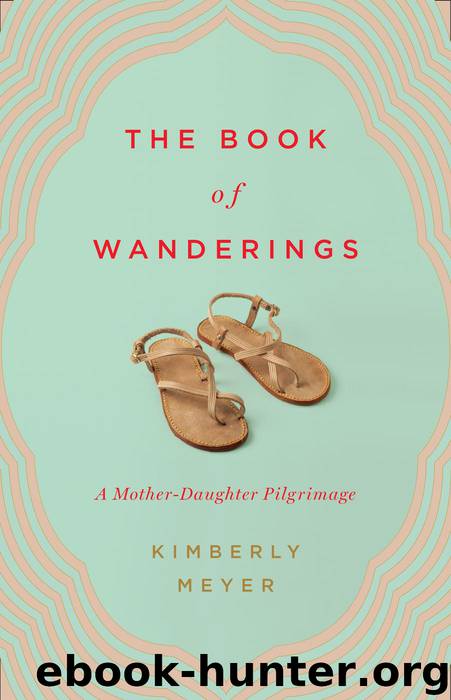The Book of Wanderings by Kimberly Meyer

Author:Kimberly Meyer
Language: eng
Format: epub
Publisher: Little, Brown and Company
Published: 2015-03-24T04:00:00+00:00
Our destinations with Carol Ann were the Jordan River, where, tradition has it, Jesus was baptized by John, and Mount Quarantal, where Jesus was tempted by Satan for forty days and forty nights in a cave on a mountain in the wilderness above Jericho. To get there, we drove east for about an hour through the Judean Desert, within whose folds lay hundreds of monasteries or, more frequently, their ruins. In these hills, too, Bedouin encampments sprawled along the side of the highway: corrugated steel, plywood, burlap, blue plastic tarps, satellite dishes, water pipes, wooden pallets. Dusty children. Dusty camels. Dusty asses. “The Bedouin call themselves il Arab, the true Arabs,” Carol Ann told us as we drove past, and I thought of the “fierce Arabs,” as he called them, that ruled the desert places Fabri traversed. “But they are no longer allowed to live as nomads, herding sheep and goats,” explained Carol Ann, “because they could wander into the military training camps. They aren’t Israeli. The Palestinians don’t want them. The Bedouin have fallen into the cracks.”
Somewhere between Jerusalem and Jericho, as the highway sloped gently down toward the Dead Sea, we passed the Sea Level sign, tethered to which was a camel, all decked out in colorful woven blankets and fringed and tasseled headgear. Beside the camel sat a Bedouin, who would allow you to take a photograph with his bedecked camel for a small fee. We didn’t stop there, but farther on, at an overlook where we got out to gaze down at Saint George’s Monastery, built into a wall of stone, Bedouin rushed toward us holding rayon kaffiyehs for sale and offering us donkey rides. From one young man we bought water frozen in used plastic bottles. The monks at the monastery had let him use their freezer. He had stored the bottles in a canvas bag handed out by the UN. All these I took to be examples of the cracks into which the Bedouin had fallen.
I liked the way Carol Ann looked at the desert. She helped me to read it. Once in a while, as we drove, she would point out an acacia tree or a tamarisk, once in a while a saltbush plant growing within some crevice that received a trickle of water. The hills, bone-colored, were traced with fine lines, like the thumbprint of God. Carol Ann told us these lines were goat tracks. And though it seemed so utterly barren, she pointed out, “If you can see tracks, then even though it’s a desert, you know that there is the possibility of sustaining life.”
I liked the way Carol Ann looked at the desert. And it reminds me now of something else she told me, about a time on that remote Greek island when she confronted the idea of survival in the most elemental of ways. The man who looked at the desert had gone to a village on the other side of the island for supplies, as they both took turns doing every other week.
Download
This site does not store any files on its server. We only index and link to content provided by other sites. Please contact the content providers to delete copyright contents if any and email us, we'll remove relevant links or contents immediately.
The Compound Effect by Darren Hardy(8733)
Wonder by R.J. Palacio(8383)
Atomic Habits: Tiny Changes, Remarkable Results by James Clear(8122)
Becoming Supernatural by Dr. Joe Dispenza(8038)
Wonder by R. J. Palacio(7867)
Change Your Questions, Change Your Life by Marilee Adams(7564)
The Road Less Traveled by M. Scott Peck(7473)
Born to Run: by Christopher McDougall(7027)
Daring Greatly by Brene Brown(6367)
Big Magic: Creative Living Beyond Fear by Elizabeth Gilbert(5555)
Grit by Angela Duckworth(5447)
The Slight Edge by Jeff Olson(5315)
Men In Love by Nancy Friday(5113)
The Wisdom of Sundays by Oprah Winfrey(5049)
You Are a Badass at Making Money by Jen Sincero(4730)
Fear by Osho(4619)
The Four Tendencies by Gretchen Rubin(4514)
The Miracle Morning by Hal Elrod(4496)
Rising Strong by Brene Brown(4340)
